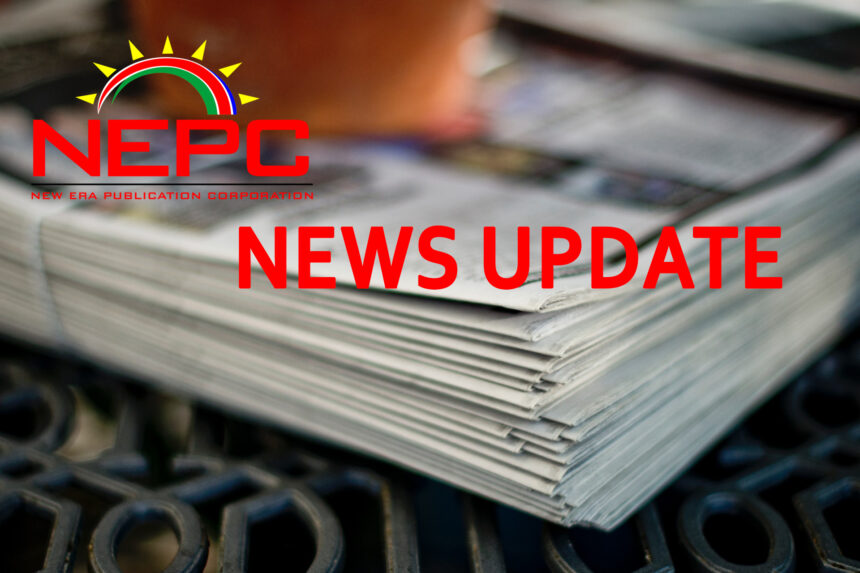The Harambee Prosperity Plan II (HPP II) covers 2021 to 2025 and builds on the solid foundation of the inaugural HPP 2016-2020. It continues to prioritise the implementation of targeted policy programmes in order to enhance service delivery, contribute to economic recovery and engender inclusive growth. HPP II aims to ensure Namibia is poised to respond to domestic socio-economic challenges and global opportunities, during and after the Covid-19 pandemic.
The formulation of HPP II involved a process of extensive literature review, workshops with subject matter experts and countrywide stakeholder consultations, including the 2019 town hall meetings. The baseline for these consultations was the HPP Final Report (2016-2020) and contemporary developmental issues.
The HPP II remains a targeted impact plan, consisting of prioritised short to medium term goals and strategic actions to accelerate national development towards Vision 2030 and prosperity for all.
The HPP II retains the five pillars, namely:
Pillar 1: Effective Governance
Pillar 2: Economic Advancement
Pillar 3: Social Progression
Pillar 4: Infrastructure Development
Pillar 5: International Relations and Cooperation
The HPP pillars remain firmly anchored on the construct of an inclusive Namibian House, built on the solid foundation of peace, stability and the rule of law.
Pillar Two: Economic Advancement
Economic advancement will be achieved through three goals and 16 activities, which will be executed to strike a balance between pursuing inclusive socio-economic growth and the requisite economic transformation to achieve the industrialisation goals enshrined in Vision 2030. As part of the HPP II economic recovery effort, GRN will commit to invest N$400 million through the project preparation fund and other mechanisms, to unlock projects with a commercial value in excess of N$27.7 billion with the potential to unlock over 42 000 jobs. This will be achieved by leveraging private sector capital and knowhow, through a mixture of public private partnerships and other procurement methods.
Namibia registered positive economic growth every year since Independence, with the sole exception of 1993. In terms of GDP per capita, the first decade (1990-2000) recorded a moderately positive rate of growth (1.4% CAGR), but between 2000-2015, Namibia embarked upon a rapid growth acceleration, outperforming many regional peers, with an average annualised rate of growth per capita of 3.1%. During this period, the rate of poverty halved and Namibia narrowed the income gap with South Africa, from 36% in 2000 to 20% in 2015. Household consumption per capita mirrored the growth acceleration and expanded at a similar pace as GDP per capita.
Namibia has made rapid and impressive strides in gaining global market share for key minerals. Foreign direct investment (FDI) more than tripled between 2005-2014. The year 2014 was the last year of the commodity boom and FDI peaked at 10% of GDP, heavily concentrated in a few prominent primary sectors: extraction, electricity and manufacturing. As the commodity super-cycle came to an end, limiting the fiscal space, Namibia experienced a trend reversal. After a few years of recurrent droughts and recessionary conditions, Covid-19 and its accompanying destruction of global and local demand, as well as disruptions in the supply chains exacerbated the situation. While the space for consumer and government spending is limited, Namibia remains endowed with unique and attractive investment opportunities, good infrastructure, rule of law and a stable democratic foundation. In addition, government is in possession of world-class assets, which will be curated to attract meaningful investments.
Given this challenging backdrop, HPP II’s Economic Advancement pillar has been redesigned to focus on three goals, with a focus on maximising Namibia’s investment potential, as a catalyst for fostering a rapid and sustainable growth trajectory.
Pillar Two will apply a deliberate bias towards marshalling resources beyond the limited balance sheet of government as it looks to match optimally priced capital to the investment opportunities, with a view to promote inclusive growth and job creation. In so doing, there is resolute commitment from government to provide the requisite enabling environment and where necessary, partner with the private sector to unlock opportunities. This focus is adopted with an acknowledgement that government has many competing priorities which must be championed by organisations, ministries and agencies, including the containment of operational expenditure relative to developmental expenditure, to secure fiscal sustainability.
GOAL 1: Optimising Stewardship of Natural Resources:
Establish a Sovereign Wealth Fund.
Support Public Enterprises reform.
Review existing regime for the allocation of fishing rights, quotas and mineral licences.
Avail sufficient quantities of water for mining industry.
Update a complete and accurate fixed public asset register.
GOAL 2: Enhancing Productivity of Priority Economic Sectors:
Identify and prioritise investment into projects with high employment creation opportunities.
Augment Namibia’s business rescue legislative frameworks, to limit economic scarring.
Unlock the economic potential of the agricultural sector.
Review policies and legislation to unlock the economic potential of communal land.
Develop a portfolio of public-private partnerships (PPPs) as a mechanism for the delivery of public goods and services.
GOAL 3: Developing Complementary Engines of Growth:
Develop an implementation plan to attract private sector investment into the green and blue economies.
Investigate the feasibility of green hydrogen and ammonia as a transformative strategic industries.
Design and offer competitive investment incentives to facilitate local and foreign direct investment attraction and retention.
Establish a holistic National MSME Fund to support a coordinated enterprise development value chain.
Lower Namibia’s cost of capital by executing the Integrated National Financing Framework (INFF) roadmap.
Leverage housing as a key catalyst to engender economic activity.


